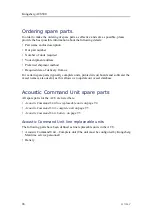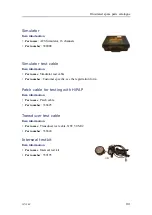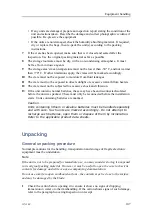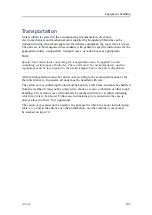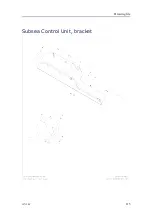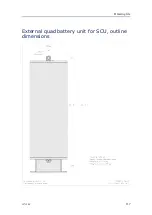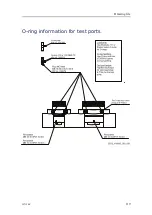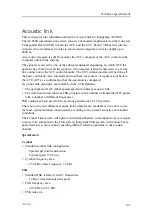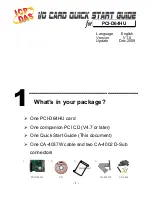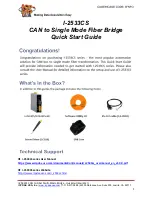
• If any units are damaged, prepare an inspection report stating the condition of the
unit and actions taken. Describe the damage and collect photographic evidence if
possible. Re-preserve the equipment.
• If the units are not damaged, check the humidity absorbing material. If required,
dry or replace the bags, then re-pack the unit(s) according to the packing
instructions.
7
If the crate has been opened, make sure that is it closed and sealed after the
inspection. Use the original packing material as far as possible.
8
The storage room/area must be dry, with a non-condensing atmosphere. It must
be free from corrosive agents.
9
The storage area’s mean temperature must not be lower than -30° C, and not warmer
than +70° C. If other limitations apply, the crates will be marked accordingly.
10
The crate must not be exposed to moisture from fluid leakages.
11
The crate must not be exposed to direct sunlight or excessive warmth from heaters.
12
The crate must not be subjected to excessive shock and vibration.
13
If the unit contains normal batteries, these may have been disconnected/isolated
before the unit was packed. These must only be reconnected before the installation
starts. Units containing batteries are marked.
Caution
Units containing lithium or alkaline batteries must be handled separately
and with care. Such units are marked accordingly. Do not attempt to
recharge such batteries, open them or dispose of them by incineration.
Refer to the applicable product data sheets.
Unpacking
General unpacking procedure
Normal precautions for the handling, transportation and storage of fragile electronic
equipment must be undertaken.
Note
If the unit is not to be prepared for immediate use, you may consider storing it unopened
in its original packing material. However, it may be useful to open the case to check its
contents for damage and retrieve any accompanying documentation.
Do not use a knife to open cardboard cartons - the contents may lie close to the surface,
and may be damaged by the blade.
1
Check the carton before opening it to ensure it shows no signs of dropping,
immersion in water or other mishandling. If the carton shows signs of such damage,
refer to the paragraph covering Inspection on receipt.
397128/C
107
Summary of Contents for ACS500
Page 1: ...INSTRUCTION MANUAL ACS500 Acoustic Control System Gisma testport system...
Page 2: ......
Page 15: ...ACS500 System with interface cables 397128 C 13...
Page 38: ...Kongsberg ACS500 ACU Computer buttons on page 37 User interface on page 38 36 397128 C...
Page 71: ...Simulation and test 397128 C 69...
Page 113: ...Drawing file Dunking transducer unit outline dimensions 397128 C 111...
Page 114: ...Kongsberg ACS500 Acoustic Command Unit outline dimensions 112 397128 C...
Page 115: ...Drawing file Subsea Control Unit outline dimensions 397128 C 113...
Page 116: ...Kongsberg ACS500 Subsea Control Unit arrangement 114 397128 C...
Page 117: ...Drawing file Subsea Control Unit bracket 397128 C 115...
Page 118: ...Kongsberg ACS500 TDR30V 34GT Subsea transducer outline dimensions 116 397128 C...
Page 119: ...Drawing file External quad battery unit for SCU outline dimensions 397128 C 117...
Page 120: ...Kongsberg ACS500 Simulator outline dimensions 118 397128 C...
Page 138: ...Kongsberg ACS500 Appendix A Type approval certificate 136 397128 C...
Page 139: ...Appendix A Type approval certificate 397128 C 137...
Page 140: ...Kongsberg ACS500 138 397128 C...
Page 141: ...Appendix A Type approval certificate 397128 C 139...
Page 142: ...Kongsberg ACS500 140 397128 C...
Page 148: ...2016 Kongsberg Maritime...


